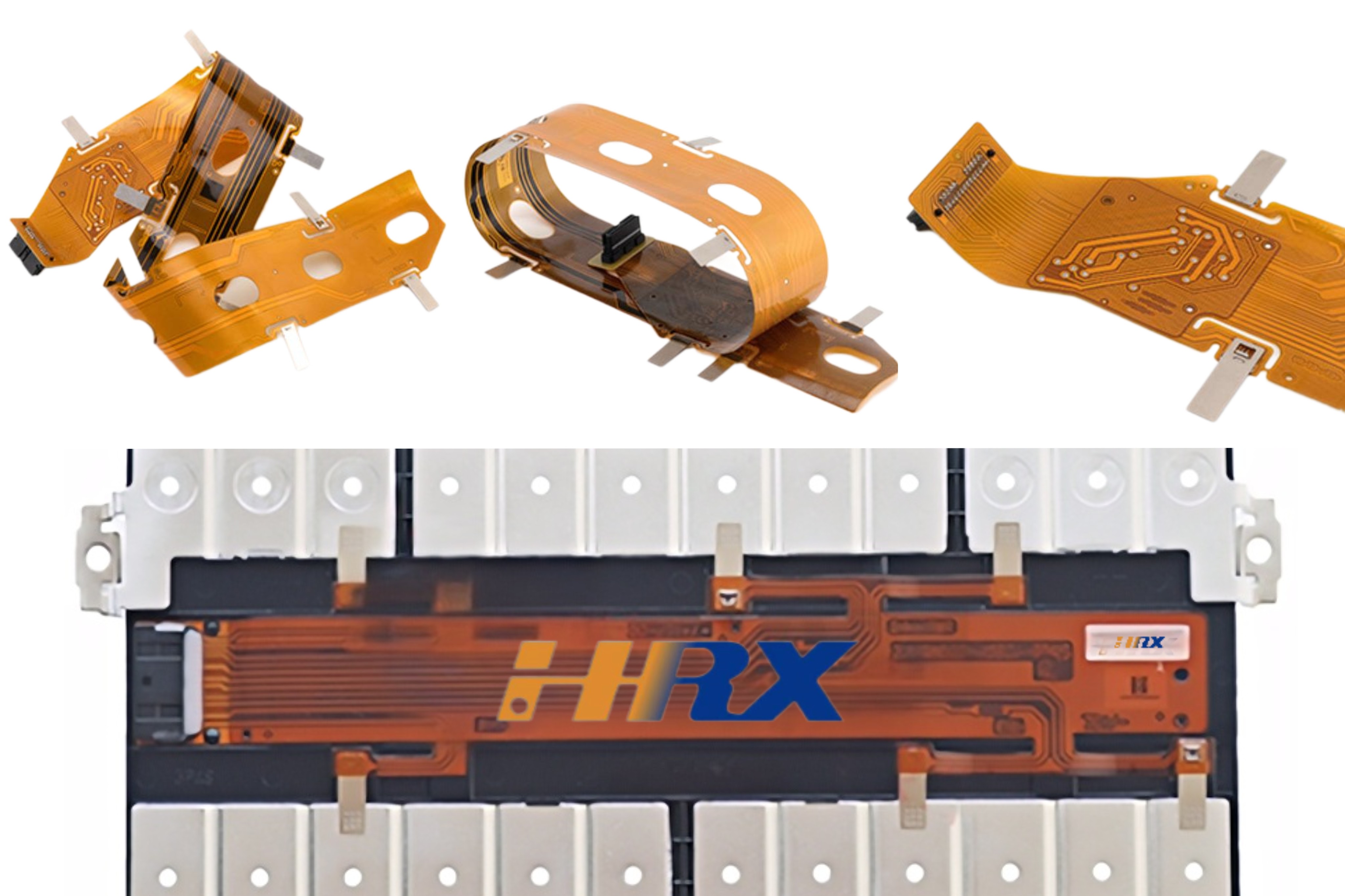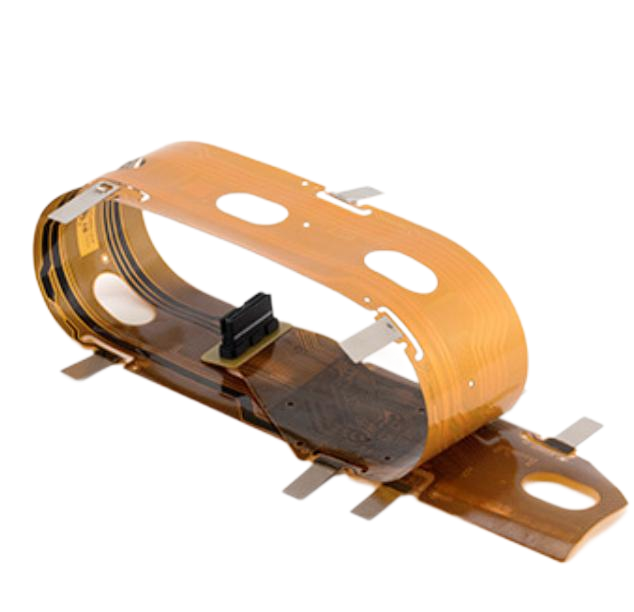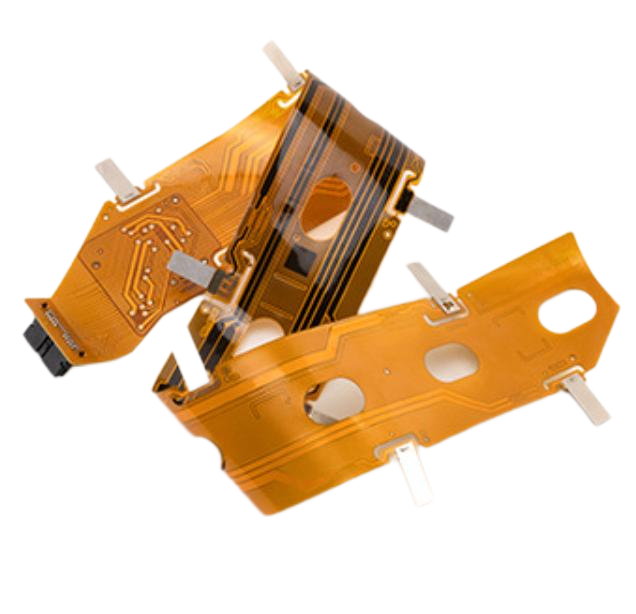Search
Key Points and Case Analysis of FPC for New Energy Vehicle Power Batteries
- Feb 17,2025
-
Share
In the current epoch of exponential growth in the new energy vehicle sector, the Flexible Printed Circuit (FPC) for power batteries serves as a linchpin in guaranteeing the optimal performance and reliability of the battery system. As a preeminent FPC manufacturer, Shenzhen Huaruixin Electronics Co., Ltd. has amassed profound expertise and insights within this domain. In this blog, we will delve into the critical aspects that demand meticulous attention during the design and production of FPC for new energy vehicle power batteries.

I. Precautions in the Design and Production Process
A. Material Selection
1.Base Material: The utilization of high - temperature - resistant and chemical - resistant base materials is non - negotiable. Polyimide (PI), for instance, is a staple base material in the FPC industry, renowned for its outstanding heat resistance and robust mechanical properties. When selecting PI, it is imperative to closely monitor its thickness tolerance and dielectric constant to uphold stable electrical performance.
2.Conductive Material: Copper foil remains the most prevalently used conductive material. Special emphasis should be placed on the copper foil's thickness, surface roughness, and resistivity. Employing low - resistivity copper foil can significantly mitigate power loss during current transmission, a pivotal factor in enhancing the energy efficiency of power batteries.
B. Design Considerations
1.Layout Design: The circuit layout on the FPC must be meticulously optimized to minimize signal interference. In a power battery system, high - voltage and low - voltage signals coexist, necessitating proper isolation and shielding designs. For example, the strategic implementation of ground planes to separate different signal layers can effectively curtail electromagnetic interference (EMI).
2.Thermal Design: Given that power batteries generate heat during operation, the FPC must possess excellent thermal dissipation capabilities. Designers can incorporate thermal vias or utilize thermally conductive adhesives to augment heat transfer efficiency and prevent overheating from compromising the performance and lifespan of the FPC.
C. Manufacturing Process
1.Printing and Etching: During the printing process, the precision of pattern transfer is of utmost importance. Precise control over printing parameters such as ink viscosity and printing pressure is essential to ensure clear and accurate circuit patterns. In the etching process, strict regulation of the etching rate and time is required to avert under - etching or over - etching, which could potentially lead to short - circuits or open - circuits.
2.Assembly and Soldering: When assembling components onto the FPC, the soldering process demands scrupulous control. The choice of solder paste, soldering temperature, and time all exert a profound influence on the reliability of solder joints. For example, using lead - free solder paste that complies with environmental protection requirements and precisely regulating the reflow soldering temperature curve can substantially enhance the quality of solder joints.

II. Successful Cases
Consider a leading new energy vehicle manufacturer as a prime example. Shenzhen Huaruixin Electronics Co., Ltd. supplied them with FPC for power batteries. Through the optimization of the FPC layout design, the electromagnetic interference between different circuits within the battery management system was effectively minimized. Simultaneously, by exercising stringent control over the manufacturing process, the yield and reliability of the FPC were significantly enhanced. Consequently, the new energy vehicle's battery system demonstrated exceptional performance in terms of energy efficiency and stability, garnering widespread acclaim from the market.
III. Key Performance and Reliability Indicators
A. Electrical Performance
1.Resistance: The resistance of the FPC circuit should be maintained within a reasonable range. Low - resistance circuits are instrumental in ensuring efficient power transmission and reducing power consumption.
2.Insulation Resistance: High - value insulation resistance is indispensable to prevent leakage current between different circuits, thereby ensuring the safety and normal operation of the battery system.
3.Signal Integrity: In the battery management system, accurate signal transmission is of critical importance. The FPC must exhibit excellent signal integrity to guarantee the precise transmission of control signals for battery charging, discharging, and monitoring.
B. Mechanical Performance
1.Flexibility: The FPC must possess outstanding flexibility to adapt to the intricate installation environment of power batteries. It should be capable of withstanding repeated bending and twisting without incurring damage to the circuit.
2.Tensile Strength: Sufficient tensile strength is required to ensure that the FPC remains intact during the installation and operation of the battery system.
C. Environmental Performance
1.Temperature Resistance: The FPC should be able to operate stably across a wide temperature range, from the frigid conditions of winter to the sweltering heat of summer, without significant performance degradation.
2.Humidity Resistance: Resistance to high - humidity environments is equally vital to prevent the corrosion of FPC components and circuits.

IV. How Shenzhen Huaruixin Electronics Co., Ltd. Deals with It
Shenzhen Huaruixin Electronics Co., Ltd. houses a highly professional R & D team dedicated to the continuous optimization of FPC design. They leverage advanced design software to simulate and analyze the electrical and thermal performance of the FPC during the design phase, thereby ensuring the rationality of the design.
In terms of production, the company has introduced a series of state - of - the - art production equipment and a rigorous quality control system. Every production link, from raw material inspection to final product inspection, is closely monitored to ensure that the manufactured FPC adheres to the highest quality standards.
Moreover, Shenzhen Huaruixin Electronics Co., Ltd. actively collaborates with upstream and downstream enterprises in the industry to jointly explore novel materials and technologies, with the overarching goal of continuously elevating the performance and reliability of FPC for new energy vehicle power batteries.
We wholeheartedly welcome new and old friends in the industry to engage in communication and discussion with us. Let us join hands to propel the development of the FPC industry for new energy vehicle power batteries!

Let’s talk! We’ll provide the perfect solution for you!
-
 Huaruixin Electronics mainly produces printed circuit boards as the core business, to provide customers with one-stop solutions for FPC/PCB production, components sourcing and Assembly.
Huaruixin Electronics mainly produces printed circuit boards as the core business, to provide customers with one-stop solutions for FPC/PCB production, components sourcing and Assembly. - WHAT WE DO — PCB Design Solutions — Flex PCB Production — Components Sourcing — FPC&PCB Assembly
- PRODUCTS — Single Sided Flexible Circuits — Double Sided Flexible Circuits — Multilayer Flexible Cirucits — Rigid-Flex Circuits — FPC Assembly — PCB Assembly
- CAPABILITY — FPC Capability — Rigid-Flex Capability — PCB Capability — Assembly Capability
- Copyright © 2024 Shenzhen Huaruixin Electronics Co., Ltd. All Rights Reserved.
- Design By BONTOP


